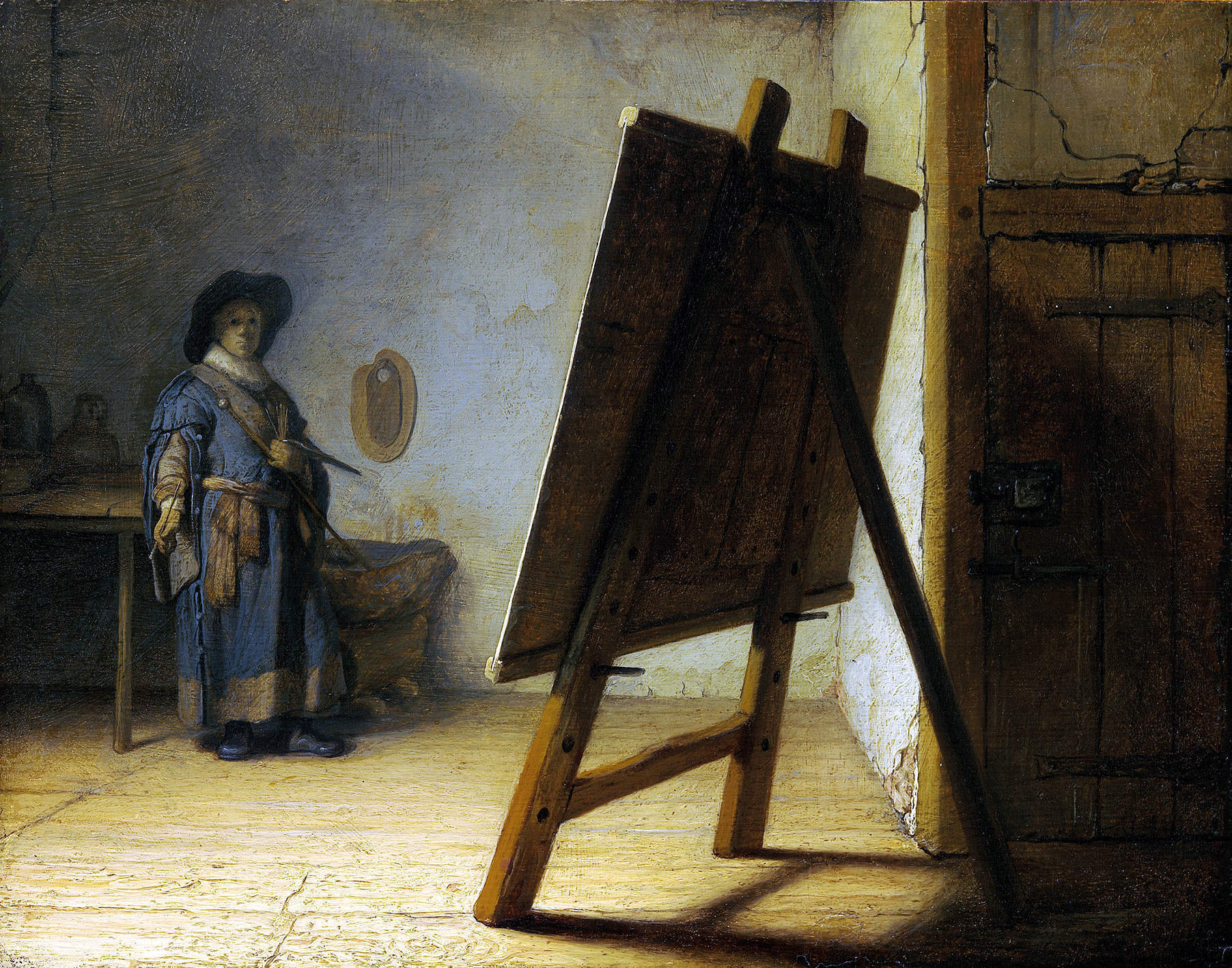
From the Renaissance onwards, when art first separated itself from craft, painting has been the focus of innumerable attempts to explain and define it. Cennino Cennini’s Il libro dell’arte c 1390 was among the first and was essentially a painters’ primer with a sideline in moral advice (he instructed painters not just to eat and drink in moderation but warned of something that “can make your hand so unsteady that it will waver more… than leaves do in the wind, and this is indulging too much in the company of women”). Leon Battista Alberti’s De Pictura of 1435 was the most influential; systematically discussing such elements as composition, geometry, colour and the newly discovered science of single-point perspective.
Leonardo, meanwhile, took part in a debate in Milan in 1498 arguing the relative merits of music, painting, sculpture, poetry and geometry. Such paragone – comparisons – were a staple of Renaissance intellectual life and Leonardo made the case for painting as being the prince of the liberal arts because it dealt not only with light, shade and colour but also with mathematics, optics, observation, intellect and imagination. What’s more it was “less tedious to follow” than poetry.
The latest writers to try to nail down the slippery nature of paint on canvas are Julian Bell and Andrew Marr. Bell’s What is Painting? first appeared in 1999 when, in an echo of Francis Fukuyama, it seemed that painting as well as history had finally had its day, vanquished by conceptualism and installation art. As it turned out, this ancient form was merely moribund and has come back to sprightly life. This new edition has been heavily revised so that Bell’s examination of what defines, links and changes the act of painting raises live questions.
Bell’s strengths as a writer on art are that he is a painter himself, and that he has both a wide historical frame of reference and an analytical mind. He quickly shows that the question of his title has no simple answer. While Leonardo claimed that “the first intention of the painter is to make a flat surface display a body as if modelled and separated from this plane”, Zola thought that a painting was rather “a corner of nature seen through a temperament”.
Bell points out that as the history of art has progressed so have the number of variables involved in what a painting might be. As each new concept is added, so the definition comes to resemble an equation of ever-increasing complexity: from the simple starting point that painting is mimetic – imitating nature – needs to be added imagination and then the idea (which for Plato meant the divine and archetypal, perfect forms), then feeling and expression, plus style and medium, plus the viewer’s perception, plus meaning and intention. Some other elements of painting, such as abstraction and narrative, affect different parts of the equation at different times.
His basic arc is the “freeing of colour from form, the freeing of painting from imagery, the freeing of art from the frame” but the real interest of Bell’s book lies in his asides. He notes, for example, that: “The experience we generally have of location and objects is mobile… and for this reason painters have sometimes called a break with single-point perspective a bid for realism,” and how “the psychology of depiction readily interlocks with the psychology of narration”. It is this depth of engagement, coupled with the fact that Bell is as familiar with philosophers as he is with painters, that gives his inquiry fascinating heft.
Marr’s book is less ambitious. His historical scope is largely confined to the 20th and 21st centuries and his perspective and references are those of a practising painter. Marr has long been an amateur artist and painting has become more important to him since his stroke in 2013.
His own pictures, which are reproduced throughout the book as a way of illustrating his points, reflect the work of late 20th-century British artists such as Gillian Ayres, Sandra Blow and Anthony Frost – near-abstract artists who used rich colour and biomorphic forms as their default means of expression. And although Marr covers many of the same topics as Bell – colour, representation, optics, the market – he is at his most interesting when at his most personal.
His view of art is a post-Romantic but deeply felt one: painting, he says, is at heart a means to find transcendence and to “give the sensation of being more deeply alive than usual”. What’s more, if it is to be any good it must be difficult to do: “You have to push away the easy messages… and work and think harder.”
Thinking harder means, even in an abstract composition, working out where structuring lines should go, how to build in rhythm, which colours should intensify or clash with others. It is a rigorously intellectual exercise. Above all, Marr stresses how it is the artist looking long and intensely before touching a brush that is the most important aspect of any painting.
The conclusions both these writers reach dovetail nicely: painting, says Bell, is really the artist saying “I exist, and therefore you, the viewer, do too”, while for Marr it is a talisman: “The best response to the cold digital present.” What both agree on is that proper painting, even when it seems simple, has to be both capacious and complex.
What is Painting?
Julian Bell
Thames & Hudson, 224pp, £24.95
A Short Book About Painting
Andrew Marr
Quadrille, 142pp, £15
Hear from the UK’s leading politicians on the most pressing policy questions facing the UK at NS Politics Live, in London. Speakers include Sir Keir Starmer, Ben Wallace, Lisa Nandy, Sajid Javid, Professor Sarah Gilbert, Jeremy Hunt, Layla Moran and Andrew Marr. Find out more about the New Statesman’s flagship event on the 28 June here.
This article appears in the 29 Nov 2017 issue of the New Statesman, The most powerful man in the world





